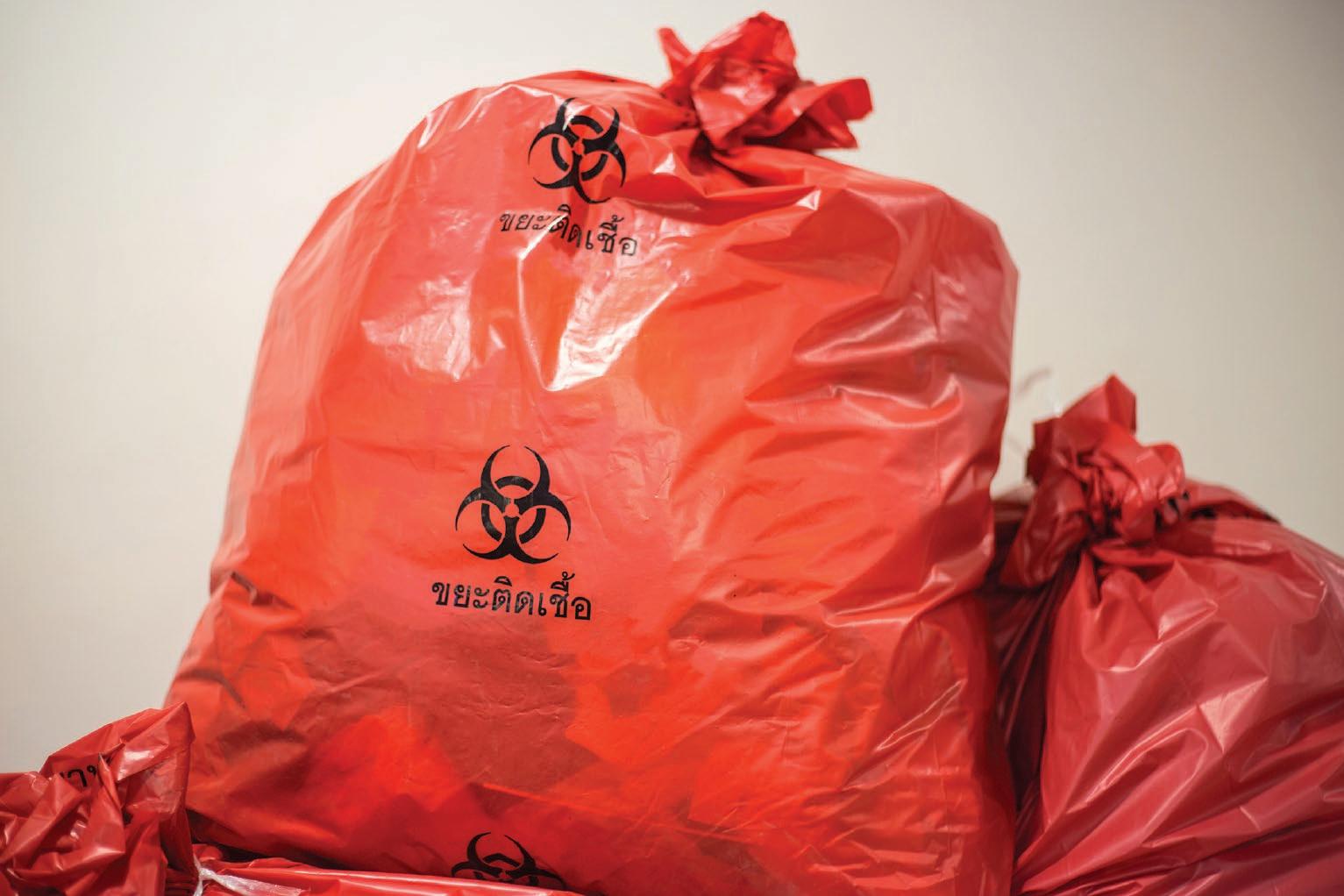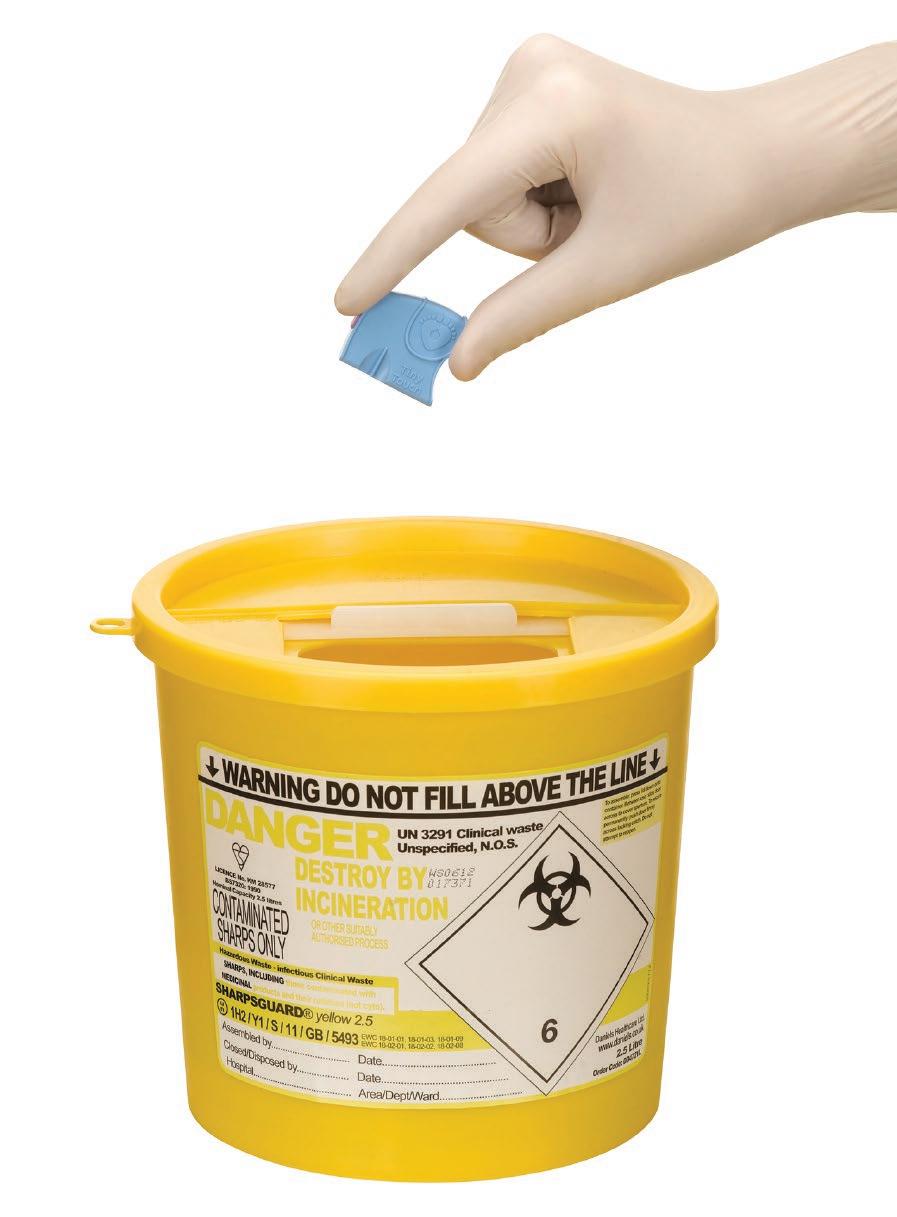
5 minute read
Sharps and Needlestick Injuries
from Hospital Reports – Preventing Needle Stick Injuries and the Role of Safety Devices – Owen Mumford
John Hancock, Editor
The risk might not be high but the outcome has huge potential for damage
The media often bring us stories of drug users who share needles and dispose of used needles in litter bins or in open spaces where children can find them. While that is hazardous enough for those concerned, there are groups who, through their work or because of their health conditions, are compelled to use needles every day and so are routinely exposed to the hazards of needlestick injuries. Medical Life Sciences News 37 reported in 2019 that; “One hundred thousand needlestick injuries occur across the NHS each year, with many more going unreported. It has been estimated that needlestick injuries cost each NHS Trust £500,000 every year - an estimated £127m across England.” That is a significant cost but, more importantly, a significant number of incidents of potential harm for, mainly, NHS and care workers.
What Are Sharp or Needlestick Injuries?
Needlestick injuries occur when needles accidentally puncture the skin. They usually affect people who work with hypodermic syringes and other needle equipment and can occur at any time when people use, disassemble, or dispose of needles. When incorrectly stored or not disposed of properly, needles might end up in laundry or in the rubbish where they could injure workers who encounter them unexpectedly. Injuries can also occur when dealing with uncooperative people who might lash out unexpectedly or even bite. All needlestick injuries put the recipient at risk of blood borne viruses (BBVs).
The Royal College of Nursing (RCN) guidance ‘Sharps Safety’ 38 explains; “The sharp instruments in health care regulations refer to medical sharps as being an object or instrument necessary for the exercise of specific health care activities which is able to cut, prick or cause injury. These include equipment such as needles and scalpels.” The UK Health and Safety Executive (HSE) 39 tells us that; “Healthcare workers can be at risk of exposure to blood borne viruses (BBVs) due to the nature of their work. Although rare, injuries from sharps contaminated with an infected patient’s blood can transmit more than 20 diseases, including Hepatitis B, C and human immunodeficiency virus (HIV).” So, it is understandable that organisations such as NHS Employers take Needlestick injury very seriously.
The Risk of Sustaining an Injury
All healthcare workers are at risk, yes, but, as the RCN guidance (above) clarifies, “perhaps unsurprisingly, the majority of sharps injuries occur to nurses because they are most likely to be carrying out procedures using sharps, such as giving injections, cannulating or taking blood.” Because they can hold more fluid, i.e. blood, within the needle, hollow bore needles are considered a greater risk when associated with an injury. Also, the RCN guidance reports that injuries usually occur during use, after use but before disposal, between steps in procedures, during disposal, while re-sheathing or recapping a needle. It also seems that some procedures, such as inserting IV cannulas can be associated with higher risk.
The Damage Done by a Needlestick Injury
As we’ve already stated, needlestick injuries are rare and the chance of any health problem resulting from them are even more rare. From the late 1990s to 2012, there were some 20 cases of UK health workers contracting hepatitis C and 5 documented cases of HIV transmission. The very helpful RCN guidance includes some of the main factors that might affect the risk of infection. These include the depth of the injury, the type of sharp used, whether the device has been in a patient’s vein or artery and, of course, the extent of the patient’s illness or injury and how infectious they are. In all circumstances the risks of infection can range from one in three (hepatitis B), one in thirty (hepatitis C) and one in 300 for HIV.
Damage to the victim of needlestick injury
These are, of course, the physical injuries, but just as damaging are the psychological and mental
Owen Mumford: Ateria® SafeControl ® Safety Pen Needle - 0.30mm x 8mm (active device)
stress caused to a worker while waiting for test results to be returned and confirm whether they have contracted any infectious diseases or bbvs and, if so, what. Looking at the list of what might result from a needlestick injury, it is unsurprising that anyone would be very worried about the risk. High Speed Training 40 explains; “The period of testing after exposure to bodily fluids from a sharps injury can be very stressful. This stress can last for several months and can seriously impact the lives of the injured individual and their family.” And even after the test results are in, the longterm psychological damage can be life changing. Solicitors, Carter & Carter 41 record one of their clients, a nurse, who suffered a needlestick injury with the consequent psychological damage but then, “developed Obsessive Compulsive Disorder (OCD) [underlining] how utterly devastating the psychological effects of a Needle Stick Injury can be.”
Damage to the employer’s organisation
Any quote from a solicitor would suggest that an injurious (physical, medical or psychological) outcome can translate into a financial cost for the organisation employing the victim. NHS Resolution 42 , which handles claims against the NHS, explains; “1,833 incident claims for needlestick injuries were received by NHS Resolution between 2012 - 2017 (fiscal years). Of these, the 1,213 successful claims cost the NHS £4,077,441 16 .” The report continues with the point that most such injuries are preventable, as we’ll see in the next article, but concludes with the sobering thought that, “If the NHS had not spent this, it could have funded 125 band 5 nurses for one year.” And that leads on to the reputational damage to the institution, largely as an employer and from the fact that the injury occurred at all, but also from the risk of what won’t get done if funds intended to care for patients have to be paid out in compensation claims.
Summary
In risk assessment terms, needlestick injuries are at very low risk of occurring and even lower risk of causing injury. However, should such an injury occur, the damage, even in the event of no injury or infection, can be considerable and of long duration, as well as financially and reputationally costly. All in all, well worth avoiding.






